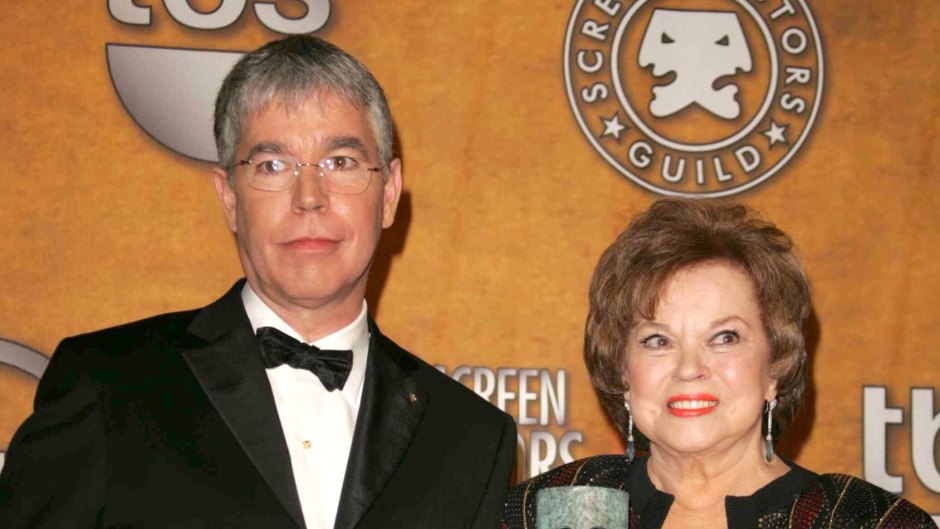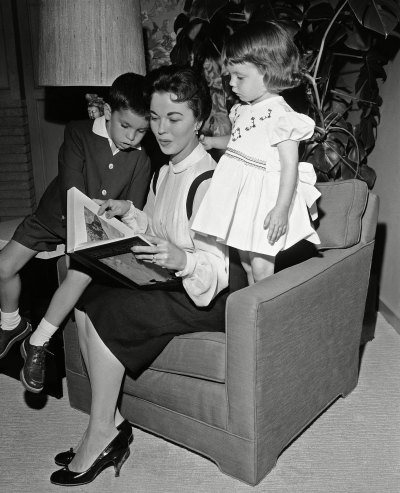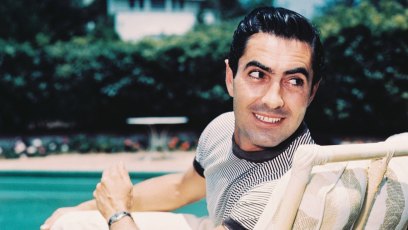
Matt Baron/BEI/Shutterstock
Shirley Temple ‘Inhabited’ a ‘Unique Moment’ in Hollywood As a Child Star, Son Says
Buddy Ebsen liked to tell the story about the time he tried to get Shirley Temple to rehearse their dance sequence for 1936’s Captain January. “She got there and asked my dad, ‘Is the dance set?’” Buddy’s daughter Kiki Ebsen tells Closer. “He said, ‘No, I’m going to make a couple of changes.’ She turned around and said, ‘Call me when it’s set, and I’ll learn it.’ The point is, she didn’t have time to learn a dance that wasn’t set.”
When Shirley, then 8, returned, she learned the routine in just an hour. “He was very impressed with her talent,” adds Kiki.

There has never been another child star as beloved as Shirley, who made 29 films by the time she turned 10, but she didn’t live a fairytale existence. During the years of her greatest fame, she worked punishing hours, received death threats and inappropriate advances and retired at 22 with just $40,000 in the bank. “I stopped believing in Santa Claus at the age of 6 when my mother took me to see him in a store and he asked for my autograph,” she once quipped.
At 3, Shirley began taking dance lessons and soon appeared in Baby Burlesks, short parody films that she would later call “a cynical exploitation of our childish innocence that occasionally were racist or sexist.” It was an education in other ways, too. When Shirley or one of her other young costars misbehaved on set, they were made to sit on a block of ice in a locked, windowless sound booth. “So far as I can tell, the black box did no lasting damage,” she wrote in her memoir, Child Star. “Its lesson of life, however, was profound. Time is money. Wasted time means wasted money means trouble.”
At age 6, Shirley became a sensation singing “On the Good Ship Lollipop” in the film Bright Eyes. “She inhabited a very unique moment in the film industry,” her son, Charles Black Jr., tells Closer, adding that Shirley’s films were popular because of their “charm” and “good family values.”
Shirley’s mother, Gertrude, became her constant companion on the set. “Her mother was very, very protective,” Marilyn Granas, the child star’s stand-in told Closer. “When other kids would be in the films with us, her mother wouldn’t let Shirley play with them.” Part of it was fear of Shirley catching a cold. Gertrude also wanted to keep her daughter away from children who were not “socially acceptable,” said Granas.
Nonetheless, every year around Shirley’s April 23 birthday, the studio would stage a party for her. “They were not really social occasions, they were publicity things,” said Granas. “Everybody would bring presents, but it was my understanding that Shirley never opened any of them. They all went to charity.”
When the 1932 kidnapping of aviator Charles Lindbergh’s infant son made news, Shirley began receiving death threats. Her terrified parents set up “an elaborate security system with guards that patrolled her family’s gated home,” says John Kasson, author of The Little Girl Who Fought the Great Depression: Shirley Temple and 1930s America. Shirley’s father also started carrying a gun.
The scariest incident occurred in 1939 when the little girl was promoting her upcoming film The Blue Bird at an L.A. theater. “A deranged woman in the front row stood up and aimed a handgun directly at Shirley,” says Kasson. The woman, who believed that Shirley had stolen her daughter’s soul, was subdued, but it was a horrifying close call.
Despite the many millions she made for Fox Studios, in 1941 Shirley was dumped due to slumping ticket sales. Her contract was picked up by MGM, which had a new plan for the 11-year-old. “First we get rid of the baby fat…Then new hair,” Shirley recalled being told by producer Arthur Freed before he unzipped his trousers and exposed himself to her in his office. “I reacted with nervous laughter,” Shirley said. Taken aback, Freed threw her out of his office.
At the peak of her career, Shirley commanded a salary of $10,000 a week, earning her a healthy $3.2 million. She had also earned money from dolls, clothing and other items which bore her likeness. So, at 22, she was understandably shocked to learn that her bank account contained just $40,000. “Ninety-seven cents of every dollar she made was gone,” says Kasson, who explains that Shirley’s father squandered her money on bad investments. “No doubt they also bought a bigger house and used it on family expenses,” he adds. “But Shirley didn’t blame him. She thought he was badly advised.”
With all the pluck of her childhood self, Shirley persevered. Her second marriage to Charles Black, a man who claimed to have never seen one of her movies, was happy and enduring. Shirley also found a second career as an American diplomat. “I’ve led three lives: the acting part, wife and mother — which is a career — and international relations,” she said. “I’m proud of my career, the first one, and I’m proud of the other two, too.”








































